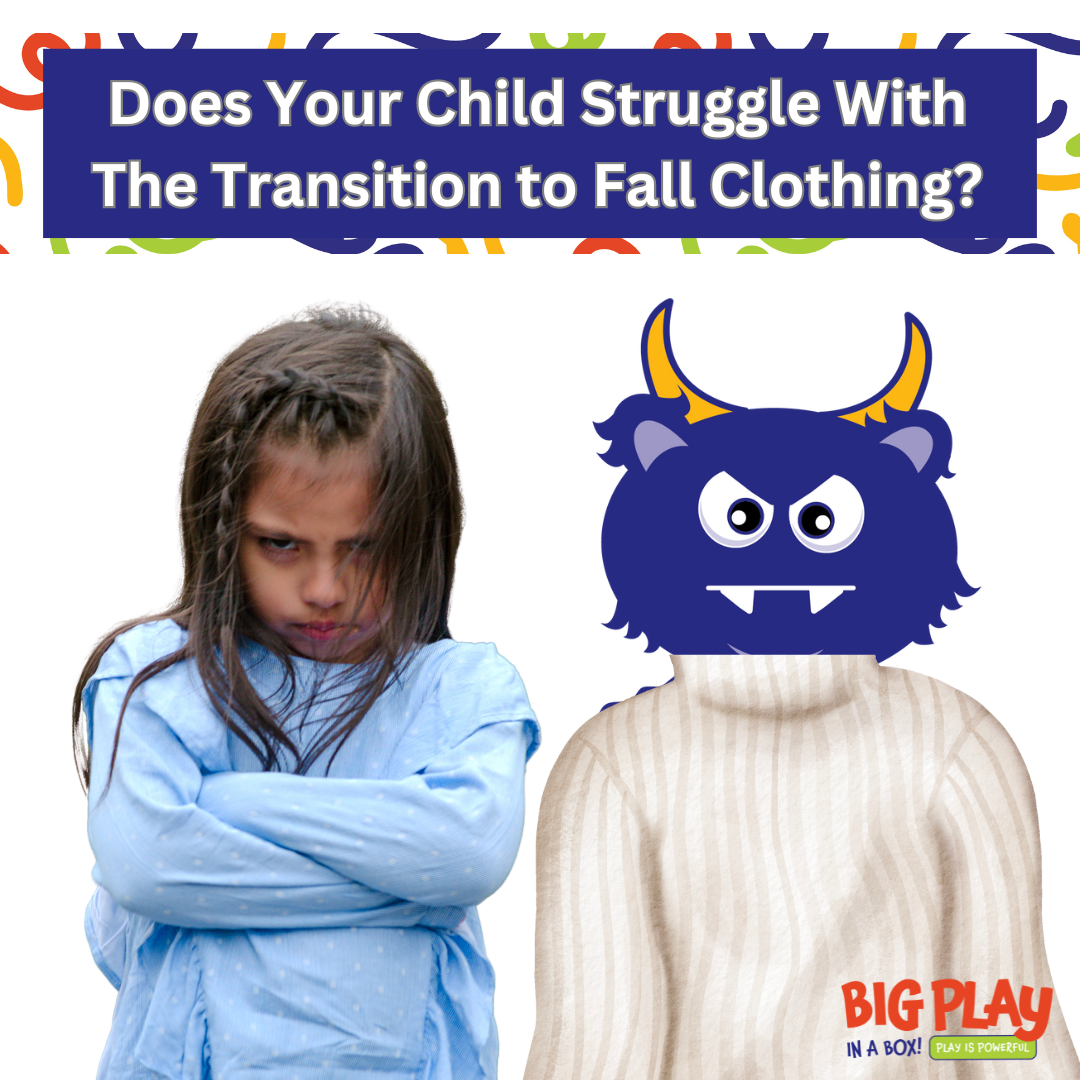
Morning battles are not for the weak. Perhaps you have just gotten a routine down to get out the door for school, co-op, playgroup, etc.. BUT...the temperature is changing. Gone are the days when shorts, shirts, and flip-flops could be worn from morning until night. Your family is now going through the dreaded...change of season!
Kids (and adults) with sensory sensitivities struggle even more during these transitional times. There can be many contributing factors. Some may seem obvious and some not so much. Couple the not-as-obvious with a child who struggles to communicate their needs; and bam! It is a potential recipe for overwhelm, overreaction, and tears from everyone who is involved.
Consider some of these factors that may create turmoil with your child and perhaps you can put on a sleuthing hat to discover adaptations that may turn your mornings around.
1. Texture Sensitivity - Often Fall clothing is thicker or has rougher fabrics. Consider shopping for fabrics that are similar to their favorite summer clothing. Breathable fabrics such as cotton or fleece are generally more accepting to sensitivities.
Have you ever shopped from a website that specializes in sensory-friendly fabrics? Try one of these two sites: CITY THREADS or TARGET In addition, you may need to pre-wash clothes multiple times to soften them and ensure that they are tag-free and as seamless as possible.
2. Change in Routine - Sensory-Sensitive individuals often thrive on routine, and the shift in wardrobe requires them to adjust to something unfamiliar, which can feel overwhelming and disrupt their sense of consistency. A Social Story may be helpful to introduce the need for clothing changes. This may need to be read or watched multiple times. Here is an example of a social story that may be helpful. WATCH SOCIAL STORY
3. Different Clothing Fasteners - With additional layers comes the addition of zippers, buttons, snaps, and laces. These can be extremely frustrating for children. Practice at home as much as possible with these skills. Some kids continue to struggle and benefit from pull-over jackets, slip-on shoes, and elastic waist pants. There are so many ways to adapt clothing in an attempt to ensure they do not feel singled out due to a difficult time with fasteners.
4. Temperature Sensitivity - Along with fabric sensitivity, kids often have a difficult time regulating their temperature. Despite our need for outerwear, you may be surprised that your child has a greater tolerance to colder weather and the more we "force" them to wear a jacket, the more uncomfortable we are unintentionally making them. Look for signs of cold such as skin temperature, shivering, skin color, and body language before you rush into layering up your child.

5. Change in Footwear - I don't know about you, but if I could get by with flip-flops all year, I would! The change to tennis shoes or boots can be a BIG change for kids. Along with the loss of freedom to the toes, you can be dealing with new shoes that feel "funny" with potential tight spots not originally felt. They can feel heavy and hot. And as mentioned above, there may be laces to contend with now that are frustrating and slow one down. Make sure you practice at home taking shoes on/off on their own. It's easier, I know to just "do it" but they will thank you later as they become more independent. Practice on the weekend or at night when there is less pressure to "get out the door".
Other Considerations That May Make Things Go a Little More Smoothly
-Use Fabric Softener to diminish chance of static electricity. Colder weather brings dry air and the anticipation of being "shocked" by your clothing is no fun!
-Practice wearing clothing at home prior to sending off to school. Any individual who has sensory sensitivities has a better chance at tolerating and adjusting when in a familiar and "safe" environment.
-Consider sleeping in clothing that will be worn to school or for the next day. I know sounds crazy and unconventional. However, if that could potentially be a battle you didn't have to have in the morning, could it be worth it?
-Figure out boundaries between parent and child in regards to weather-appropriate and school-appropriate clothing. Allow your child as much independence as appropriate when choosing clothing, even if it means wearing the same pants 3 days in a row.
-Consider new smells of clothing. Whether it is because they are "new" or you have switched laundry detergents, it can be very uncomfortable for someone with an ultra-sensitive nose.
While this list is long, it likely does not cover "all" of the difficulties that arise when it comes to clothing and the sensory-sensitive individual. Being a sensory detective adult attempting to figure out their sensory-sensitive child can be daunting. Trial and error, patience, and understanding are the most important aspects to remember when you are faced with these difficulties.
Do you have specific questions that you would like someone to problem-solve with you? Do not hesitate to reach out to me at bigplayinaboxllc@yahoo.com. You never know what may come out of a judgment-free zone!
Miss Connie

